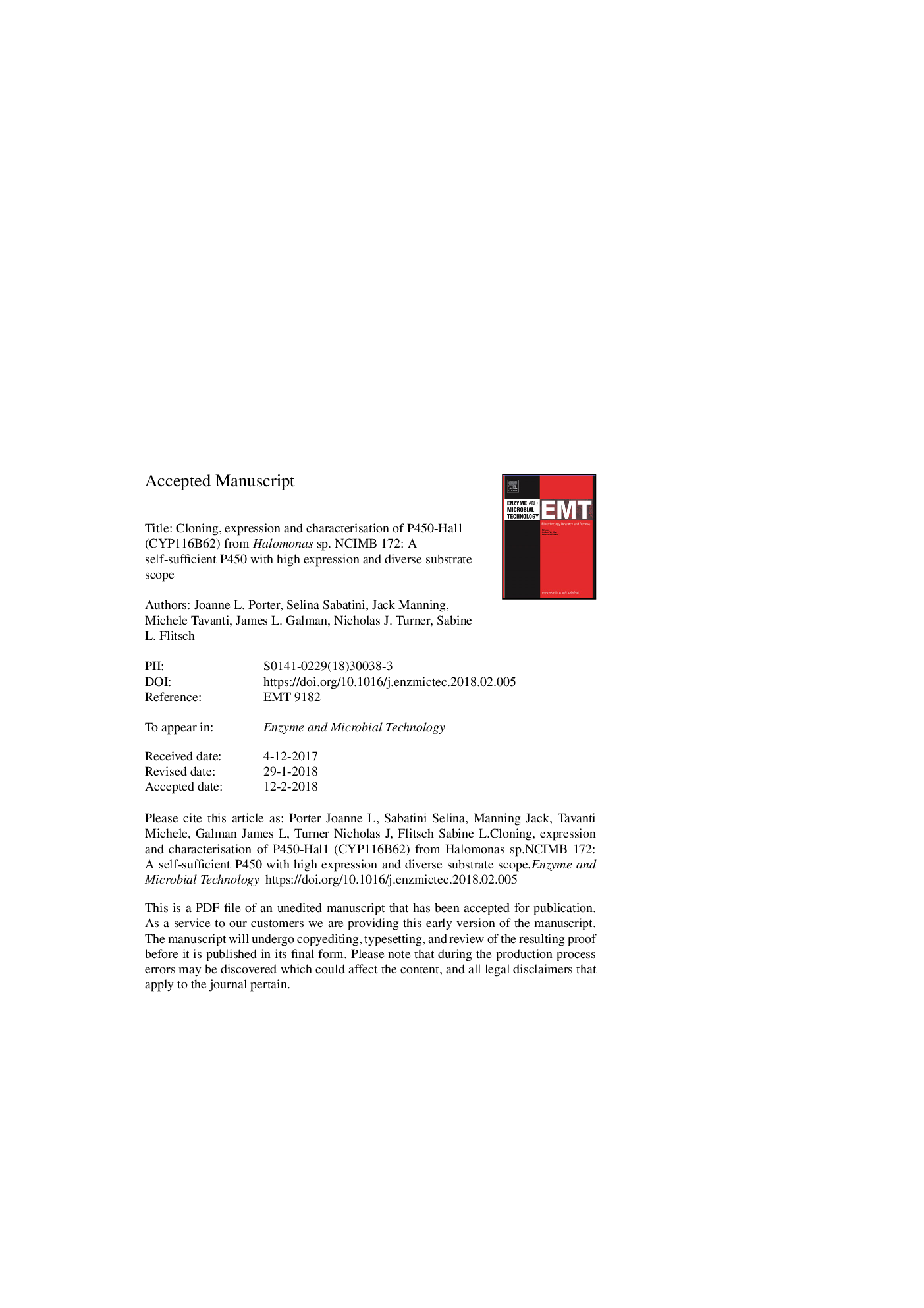| Article ID | Journal | Published Year | Pages | File Type |
|---|---|---|---|---|
| 6488121 | Enzyme and Microbial Technology | 2018 | 23 Pages |
Abstract
Cytochrome P450 monooxygenases are able to catalyse a range of synthetically challenging reactions ranging from hydroxylation and demethylation to sulfoxidation and epoxidation. As such they have great potential for biocatalytic applications but are underutilised due to often-poor expression, stability and solubility in recombinant bacterial hosts. The use of self-sufficient P450â¯s with fused haem and reductase domains has already contributed heavily to improving catalytic efficiency and simplifying an otherwise more complex multi-component system of P450 and redox partners. Herein, we present a new addition to the class VII family with the cloning, sequencing and characterisation of the self-sufficient CYP116B62 Hal1 from Halomonas sp. NCIMB 172, the genome of which has not yet been sequenced. Hal1 exhibits high levels of expression in a recombinant E. coli host and can be utilised from cell lysate or used in purified form. Hal1 favours NADPH as electron donor and displays a diverse range of activities including hydroxylation, demethylation and sulfoxidation. These properties make Hal1 suitable for future biocatalytic applications or as a template for optimisation through engineering.
Keywords
Related Topics
Physical Sciences and Engineering
Chemical Engineering
Bioengineering
Authors
Joanne L. Porter, Selina Sabatini, Jack Manning, Michele Tavanti, James L. Galman, Nicholas J. Turner, Sabine L. Flitsch,
